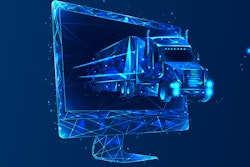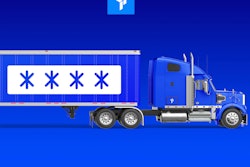Today’s highly sophisticated and evolving Artificial intelligence (AI)-driven tools and resources – including ones that leverage natural language processing like ChatGPT and Google’s new AI product Bard – are creating many new opportunities for organizations. However, the actual impact AI will have on transportation fleets in the areas of improved equipment asset management strategies, and operations such as maintenance and repair (M&R), remains to be seen.
Like many other leading-edge technology resources today, these advanced AI tools possess incredible promise. Still, executives need to understand the pros and cons of how far they can rely on such tools in their day-to-day operations.
What are AI tools like ChatGPT?
These tools are increasingly being talked about because the transportation and supply chain industries have been buzzing about new-age resources like Open AI ChatGPT since it was initially released in November 2022. The Chat Generative Pre-Trained Transformer (ChatGPT) is still in its infancy stages, but the technology has caught the attention of executives because of its ability to generate rapid responses and detailed answers. What’s more, because the tools are driven by AI, they leverage human-like language during interaction.
ChatGPT promises to dramatically increase organizational visibility, build a baseline for strategies and plans, streamline internal and external communication, and effectively optimize end-to-end operations.
Three critical areas in running a corporate transportation fleet could see significant impacts with the continued growth of AI and ChatGPT – asset management, equipment finance, and M&R planning and operations.
As an example, when you ask ChatGPT why asset management is important for equipment finance it offers the following excerpts:
‘Asset management helps to maximize the value of equipment over its lifespan by ensuring that it is properly maintained and used efficiently. This can lead to reduced downtime, increased productivity, and extended equipment life, ultimately increasing the equipment's overall value. Asset management enables finance companies to effectively plan for equipment replacement or upgrades, ensuring that they can provide clients with the most up-to-date and efficient equipment possible. This can also help finance companies to manage cash flow and budget more effectively.’
While this provides a mostly compelling overview of the role of asset management, there are inconsistencies that are inaccurate. For example, traditional finance companies and banks play no role in the planning of equipment replacement or upgrades.
If you ask ChatGPT to build an asset management plan for a Class-8 heavy-duty truck fleet, it will generate a high-level overview covering topics such as equipment inventory, preventative maintenance, telematics and IoT solutions, driver training and safety programs, replacement and upgrade planning, budget and cash flow management, and reporting. These are all baseline topics that need to be considered for asset management.
But it’s important to keep in mind that ChatGPT will not answer financial/mathematical questions, but it will defer to pros and cons of a business transaction like buying or leasing. It also tends to give wrong answers because it pings millions of web references to what you ask and then tries to compile the most frequently mentioned text. Without the proper knowledge and expertise, you could make wrong decisions that could negatively impact your operation.
Therefore, it is crucial to understand that any inaccuracies produced by an AI tool may have consequences in the areas of financial loss outcomes, legal or even defamation toward an organization. This also includes defining the true source of who actually produces any material developed entirely or in part by an AI tool such as ChatGPT. While there currently are no laws that determine the responsibility of any inaccuracies, it is widely speculated that regulation could soon be forthcoming as a set of guidelines (1).
Where ChatGPT does a disservice for fleets
However, ChatGPT won’t serve as a solution to help build a custom strategy that serves your fleet specifically. In fact, aside from the general considerations, ChatGPT is not built to analyze actual miles of vehicle operating and utilization data to build an effective asset management plan. And while it’s hard to fathom organizations with transportation fleets will actually rely on ChatGPT to create their entire strategy, some may confuse it with fleet analytic tools in the market. Depending too much on a standardized approach during the planning phase without incorporating actual vehicle operating data along the way can be problematic.
This added level of customization is essential because by scrutinizing actual truck operating data, fleets can build a proper and customized fleet modernization plan for their asset management, which is critical in arriving at a strategy that produces optimum flexibility and agility within their financial and operational business model.
While ChatGPT on its own can’t produce a plan with this level of detail, asset management companies have fleet analysis and are providing AI-driven analytics that help organizations closely monitor key fleet metrics that include lease versus purchase analysis; sales Tax analysis; unbundled vs. Full-Service Lease Analysis; comparative Cost Analysis to determine the optimal time to upgrade equipment, etc.; per unit P&L; predictive Life Cycle Modeling
Where AI is assisting operational functions
Aside from asset management and procurement, AI tools are impacting operations for organizations in various industries.
Several recent studies illustrate the significant benefits that AI tools have over traditional spreadsheet analytics. A recent study by McKinsey & Company estimated that AI-powered technologies can reduce errors between 20% - 50% for organizations focused on supply chain management (2).
Furthermore, the Boston Consulting Group (BCG) offers a report that shows how AI may help organizations achieve $1.5 trillion in additional value3 from increased productivity and reduced downtime in the global industrial sector by 2030. For M&R operations within the manufacturing sector, a separate McKinsey report found that AI-enhanced predictive maintenance of industrial equipment will generate a 10% reduction in annual maintenance costs, up to a 20% downtime reduction and 25% reduction in inspection costs (4).
Total Cost of Ownership (TCO) analytic tools built by companies that provide life cycle cost management with billions of miles of data and understand the full scope of TCO are continuously monitoring economic factors, used truck values, depreciation, emissions, performance data, and equipment costs to determine the optimum asset management strategy. With regard to M&R, they also identify potential problems and redeploy corrective actions to prevent truck breakdowns and mechanical failures. This insight from asset management partners is enabling corporate transportation fleets to move from a traditional, reactive approach in maintenance to a predictive or even preventive approach. Again, tools like ChatGPT can provide high-level input and guidance, but may not offer specific insight to a particular fleet.
This is important because customized TCO analytic tools that leverage predictive modeling allow organizations with transportation fleets to create future business insights with a significant degree of accuracy. With the help of sophisticated data analytic tools and modeling, these firms can use past and current operating data to reliably forecast budget trends in milliseconds, days, or years into the future. As more AI-powered tools are introduced to transportation fleets, it’s important for these organizations to collaborate closely with their asset management partners to ensure these tools are being used effectively to improve operations and their bottom lines. Understanding the fleets’ specific challenges, asset management partners can also help identify which AI-powered tools are best suited to address those challenges and how to properly integrate them into their fleet operations.
Hadley Benton is Executive Vice President of Business Development at Fleet Advantage, a leading innovator in truck fleet business analytics, equipment financing and lifecycle cost management. For more information visit www.FleetAdvantage.com.












